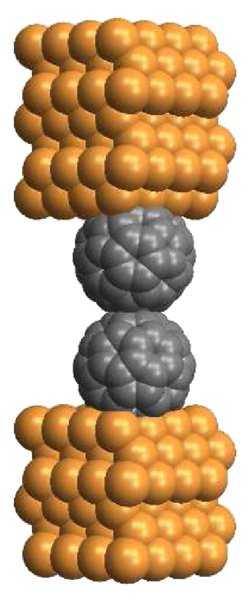Nov 12 2009
The performance of modern electronics increases steadily on a fast pace thanks to the ongoing miniaturization of the utilized components. However, severe problems arise due to quantum mechanical phenomena when conventional structures are simply made smaller and reach the nanometer scale. Therefore current research focuses on the socalled bottomup approach: the engineering of functional structures with the smallest possible building blocks single atoms and molecules.
 Copyright: CAU
Copyright: CAU
For the first time a collaboration of researchers across Europe now achieved to investigate the electrical behaviour of only two C60 molecules touching each other. The molecule which is shaped like a football was discovered in 1985 and since then has attracted tremendous attention by researchers all over the world due to its unique chemistry and potential technological applications in nanotechnology, materials science and electronics.
The findings of the researchers from institutes in Germany, France, Spain and Denmark were published in the latest issue of the prestigious magazine Physical Review Letters. A scanning tunnelling microscope (STM) was used to construct an ultra small electrical circuit comprised of only two C60 molecules, each just 1 nanometer in diameter. The researchers first picked up a single C60 molecule with the STM tip and thereafter approached a second molecule with a precision of a few trillionths of meters. During this controlled approach the physicists were able to measure the electrical current that flows between the two molecules. Understanding this current, which depends critically on the distance between the molecules, is important for utilizing molecules in future electronics.
The investigation revealed that the electrical current does not flow easily between the two touching C60 molecules the conductance is 100 times smaller than for a single molecule. This finding is crucial for future devices with closely packed molecules as it indicates that leakage currents between neighbouring circuits will be controllable.
These experimental findings are strongly supported by quantum mechanical calculations which too come to the result of poor electrical conductivity between two C60 molecules.
The extreme precision of manipulation and control of single molecules presented in this work open up a new route for exploring other promising molecules. The deeper understanding of electrical current on the nanometer scale is an essential step towards novel molecular nanoelectronics.